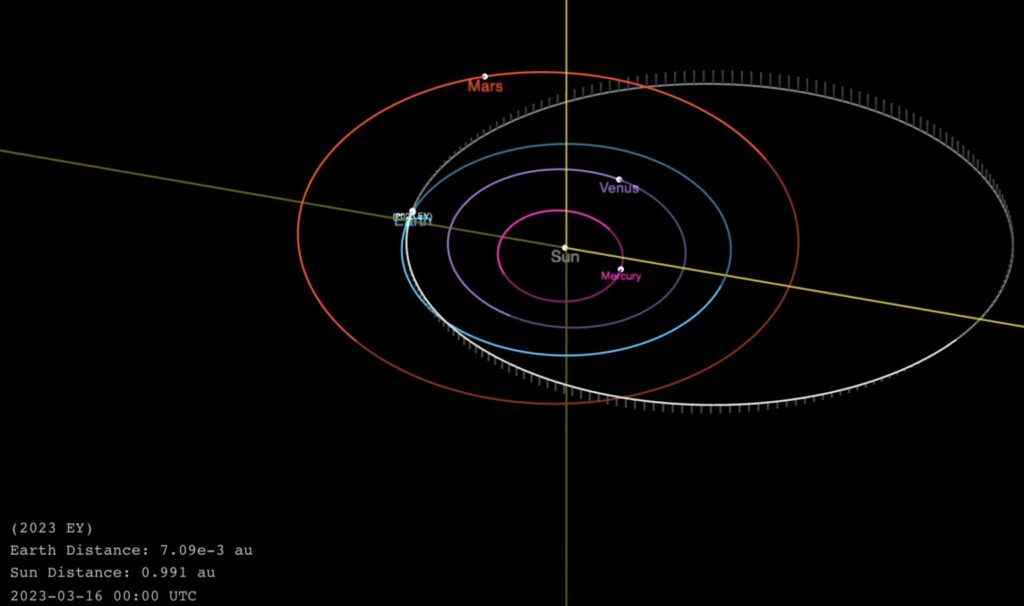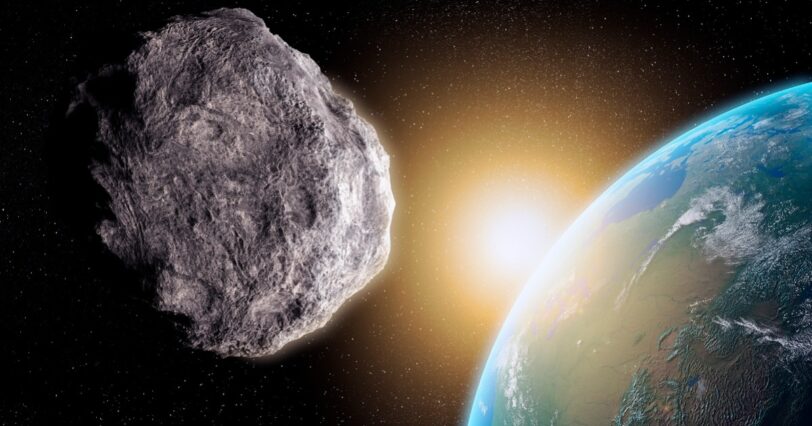On the upcoming late Thursday night or Friday morning, depending on your location, there is a notable astronomical event that will occur. The asteroid 2023 EY, which was recently discovered, is set to pass by our planet. Its trajectory will bring it to a distance of merely 240,000 kilometers (149,000 miles) from Earth, which is slightly less than two-thirds the distance of our Moon. While this may initially sound like a dangerously close encounter, the reality is that we have nothing to worry about.
The asteroid itself is only 16 meters (52 feet) in diameter, which is comparable to the size of the Chelyabinsk meteor that exploded over Siberia in 2013. Fortunately, 2023 EY is not expected to enter our atmosphere, nor does it present any significant threat to us. Rather, its flyby will offer a fantastic opportunity for us to study this celestial body.
Although not visible to the naked eye due to its faint luminosity, the Virtual Telescope Project will be live streaming the event for those interested in observing the asteroid. The stream will be captured by a 17-inch robotic telescope located in Ceccano, central Italy, and will begin at 00:00 UTC on Friday, March 17, corresponding to 20:00 EDT on Thursday, March 16, and 11:00 AEDT on Friday, March 17. The closest approach of the asteroid is expected at 00:35 UTC on Friday, March 17. You can watch below.
The asteroid was initially detected on Monday, March 13, by a telescope at the Sutherland Observing Station located in South Africa. This telescope is part of the ATLAS network, established by the University of Hawaii and funded by NASA to provide an asteroid impact early warning system. The ATLAS network comprises four telescopes, two located in Hawaii, one in Chile, and one in South Africa. The primary objective of the network is to detect potentially hazardous asteroids and provide advanced warning of their trajectory towards Earth.
2023 EY is classified as an Apollo NEO, which is the largest group of NEOs known to us, with 17,540 Apollo asteroids as of February 2023. The Apollo asteroids are named after 1862 Apollo, an asteroid discovered by German astronomer Karl Reinmuth in the 1930s. These asteroids have orbits larger than that of Earth around the Sun, but their paths intersect with Earth’s.

While not classified as a potentially hazardous asteroid due to its size, 2023 EY remains on NASA’s Asteroid Watch Dashboard due to its close approach. In light of recent advancements in asteroid deflection technology, such as the DART mission, having advanced warning systems for asteroid detection is crucial.
The upcoming flyby of asteroid 2023 EY provides us with a remarkable opportunity to observe and learn more about this small celestial body. Its close proximity to Earth may seem alarming at first, but there is no cause for concern. We can appreciate the marvels of our universe and the technologies that enable us to study them.
READ MORE: Astronomers Detect Huge ‘Planet Killer’ Asteroid that Could One Day Smash into Earth (Video)


